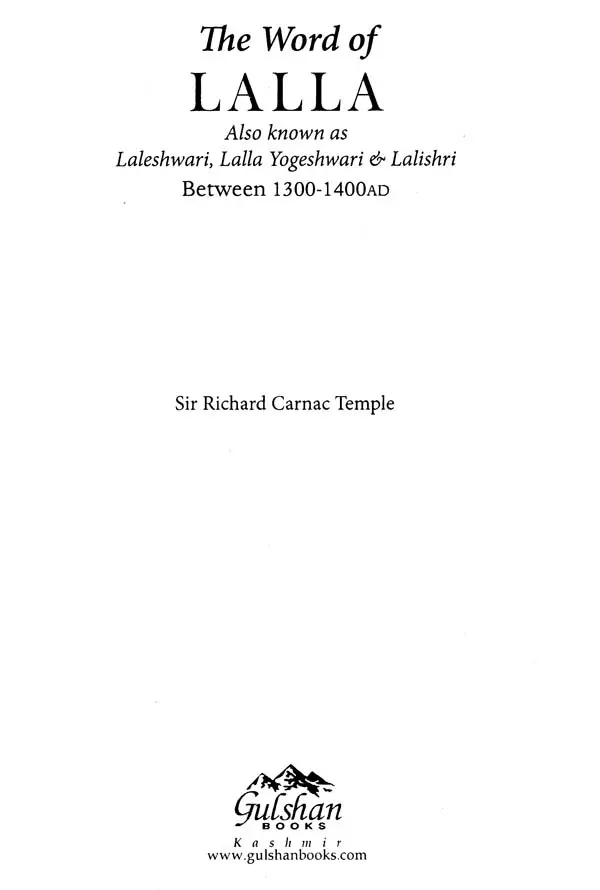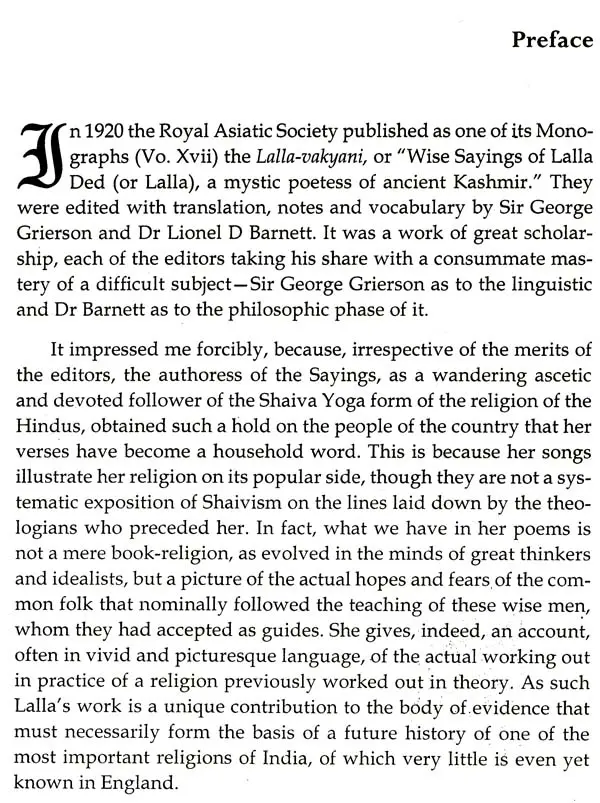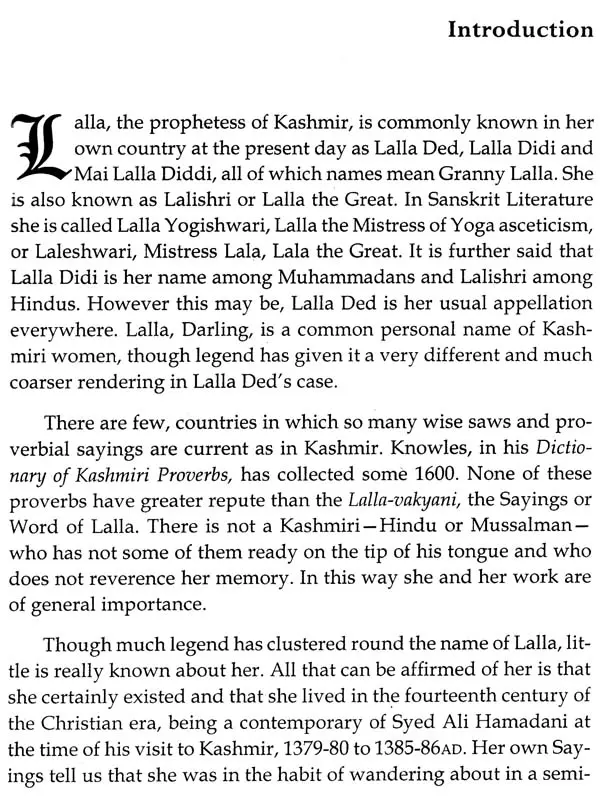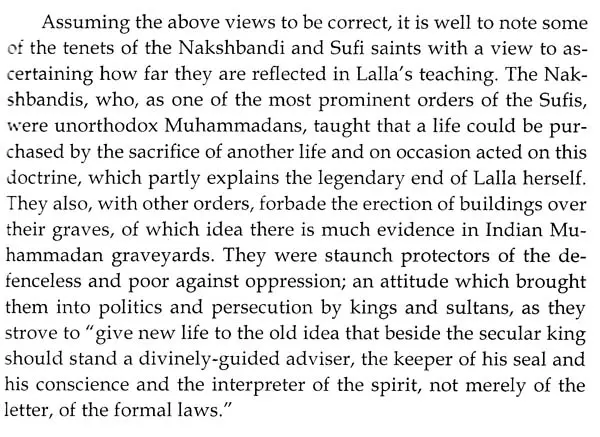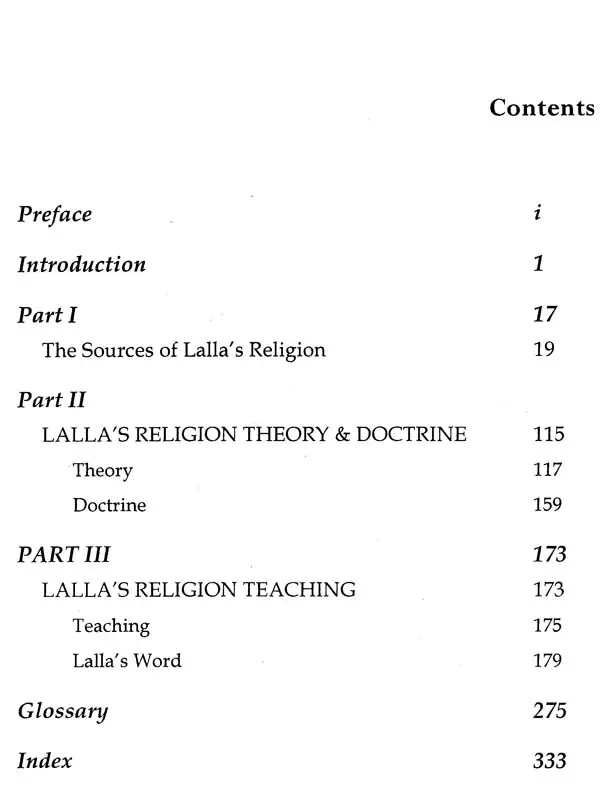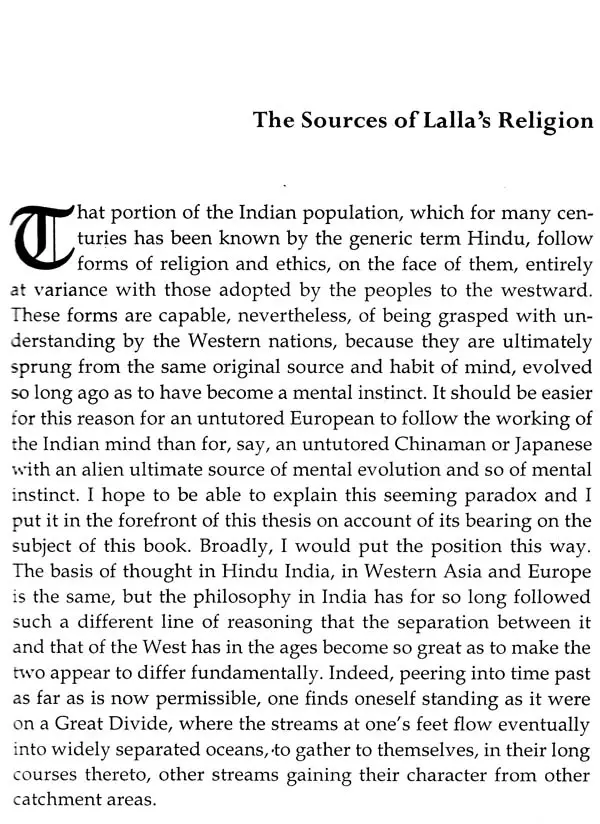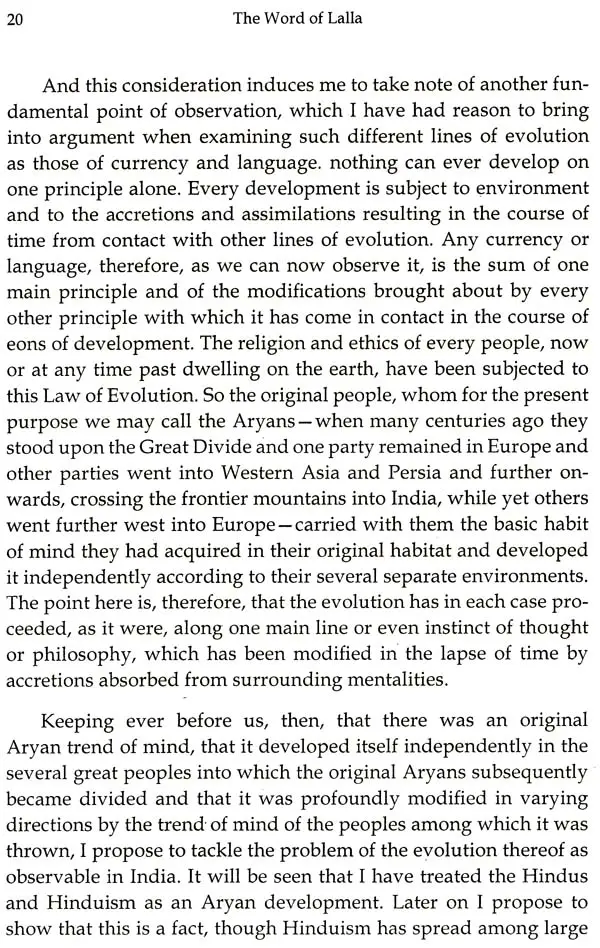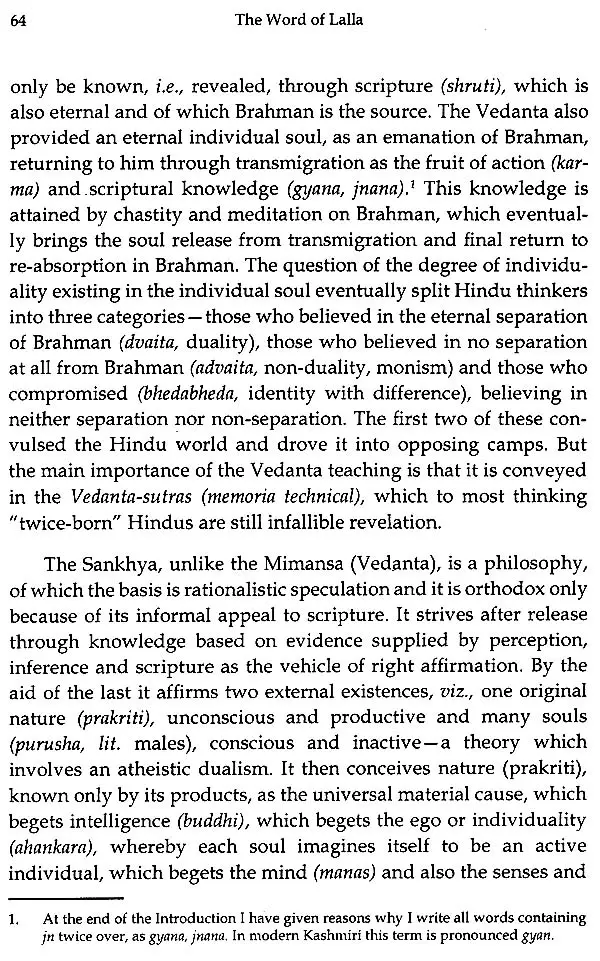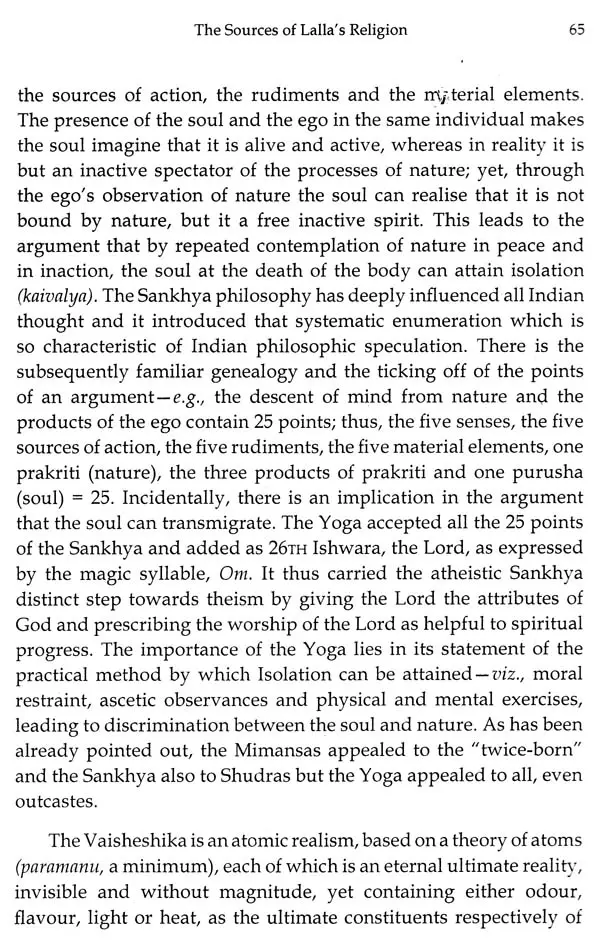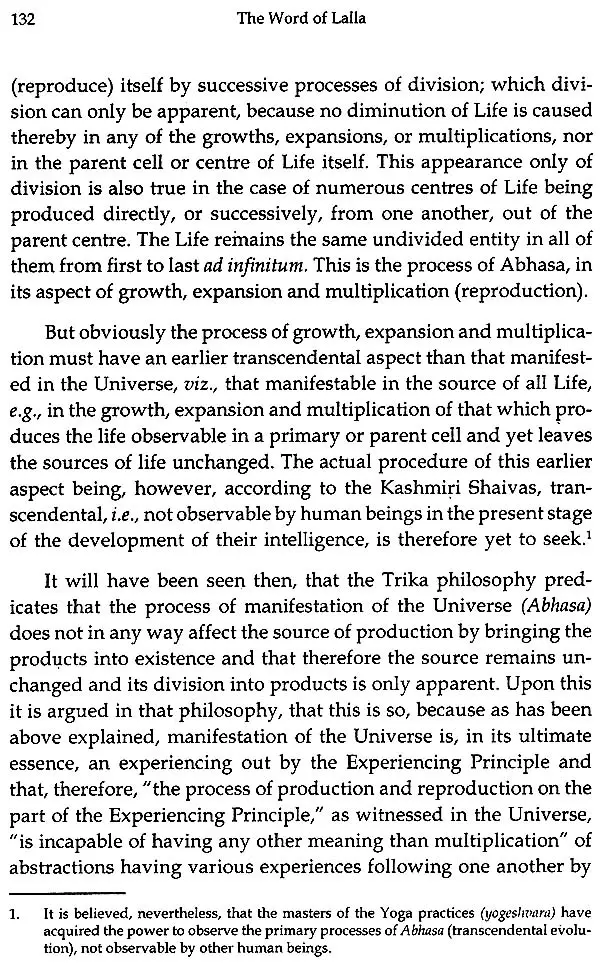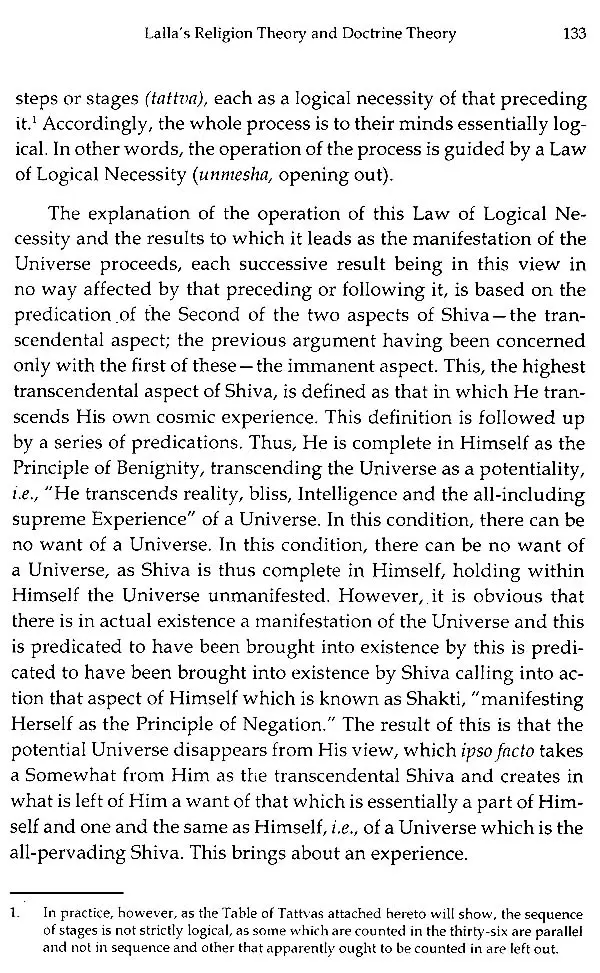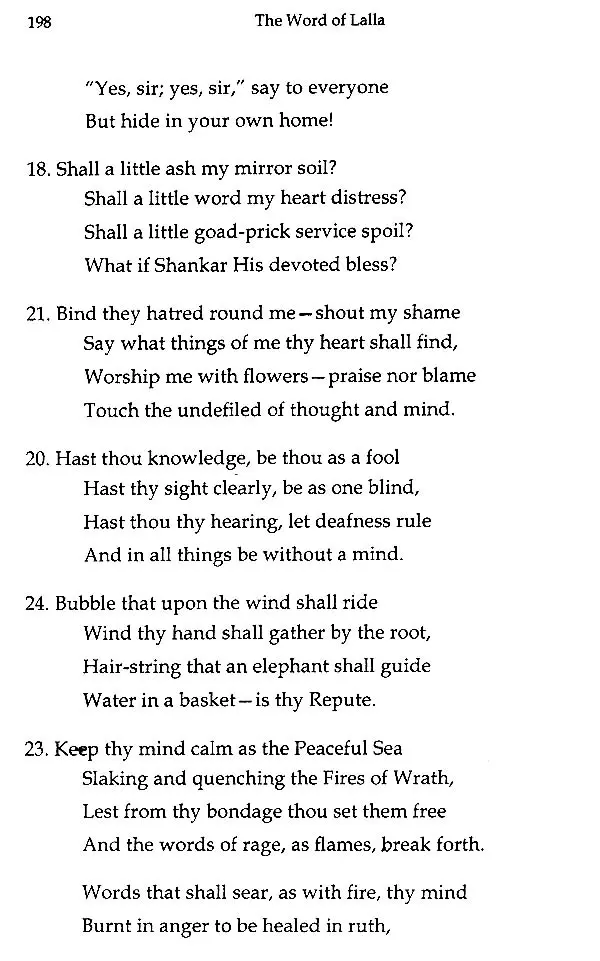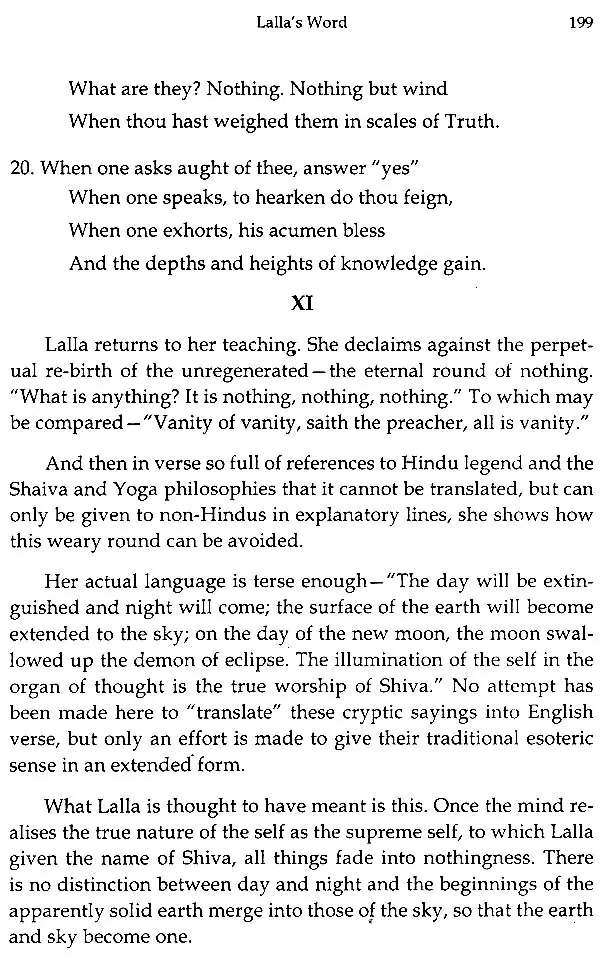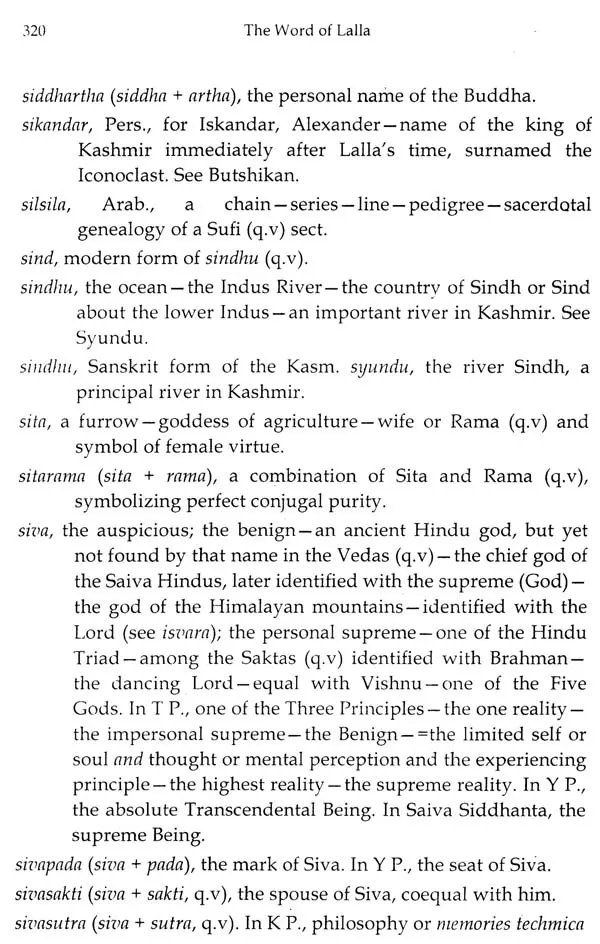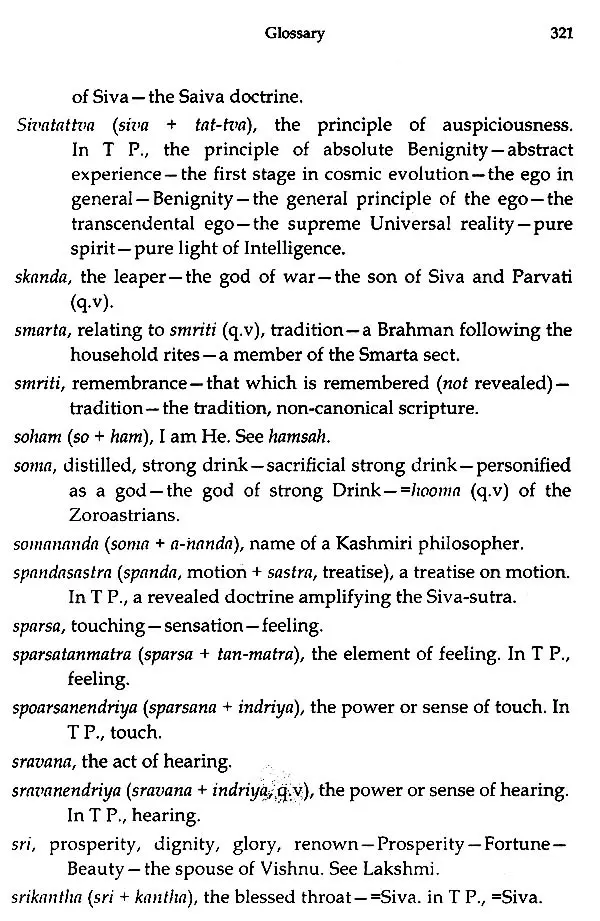
The Word of Lalla (Also known as Laleshwari, Lalla Yogeshwari & Lalishri Between 1300-1400AD)
Book Specification
| Item Code: | UAI623 |
| Author: | Sir Richard Carnac Temple |
| Publisher: | Gulshan Books, Kashmir |
| Language: | English |
| Edition: | 2015 |
| ISBN: | 9788183392796 |
| Pages: | 332 |
| Cover: | PAPERBACK |
| Other Details | 9.50 X 6.50 inch |
| Weight | 630 gm |
Book Description
The profound verses of Lalla Dyad were recorded from oral tradition for the first time by Baba Daud Mashkwati in his book Asraral Abroar in 1654, the manuscript was in the Persio-Arabic script. Bhaskara Razdan of the 18TH century prepared a collection of the verses of Lala in the Sharda script, the earliest the most common script developed in Kashmir. He called the collection Lallavookya (Lalla's sayings).
The European scholars appreciated the significance of these manuscripts and among other intellectual efforts to rediscover the past glory of India, initiated a systematic survey of rare manuscripts obtaining in the country. In 1876 Dr G Buhlur, an eminent Indologist, well versed in Sanskrit and oriental learning, made a survey of Sanskrit manuscripts in the valley of Kashmir and published his report in 1877 from London. The report, inter alia, contains a catalogue of the manuscripts in Kashmiri. While making a survey of the Sanskrit manuscripts obtaining in various private libraries of the Pundits of the valley found two manuscripts of the verses of Lalla Dyad, one in the Devanagri was incomplete comprising 6 folios and the other in the Sharda, comprising 13 folios. Dr G Buhalar placed the two MSS at S No 800 and 801 on the list of the MSS he purchased in 1875-76.
Sir Richard Temple, the principal editor of the Indian Antiquary published from Calcutta, stayed in Kashmir for a pretty long time and had intimate contacts with the most renowned Sanskrit pundits of the valley White Inquiring about various aspects of Kashmiri mysticism, called Shaivism, he had to have a thorough understanding of the poets of the land, especially Lalla Dyad, writing in the vernacular.
Richard Carnac Temple was born in Allahabad on 15 October 1850. After education at Harrow School and, from 1868, at Trinity Hall, Cambridge, Temple was commissioned in the Royal Scots Fusiliers in 1871. He was transferred to the British Indian Army in 1877, being mentioned in despatches while serving with the 38th Dogras in the Second Anglo Afghan War of 1878-79.
Temple had been honoured as a Companion of the Order of the Indian Empire in 1894, recognising his work in India, and in 1913 he was President of the anthropological section of the British Association.
Temple joined the Folklore Society in 1885 and among the papers he published in its journal was The Science of Folk-lore (1886). He wrote various works often dealing with the religions and geography of India. He believed that a knowledge of local folklore was useful both to ruler and ruled.
Book's Contents and Sample Pages
